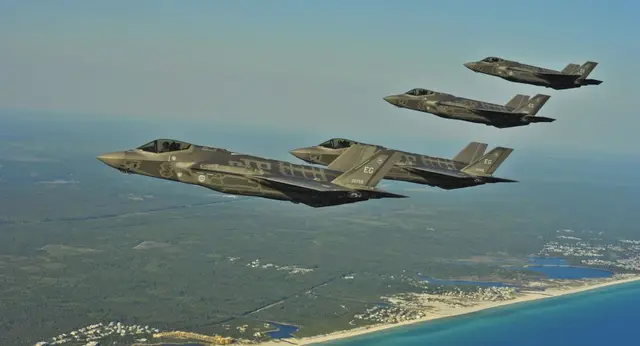China has established itself as one of the most sought-after markets for independent gaming, with more gamers willing to pay for innovative and often low-budget content over blockbuster console brands.
Tech giants like Tencent have invested in the “indie” sector, while established gaming platforms like NetEase have backed domestic and foreign game developers in a market catering to a new era of mobile gamers as well as stalwarts of the PC generation.
Minecraft: 0-60 million users in three months
The Chinese gaming community’s passion for indie titles can be seen by the rapid growth of Minecraft in the country.
The open-world “virtual Lego” game created in 2011 by one man – Sweden’s Markus Persson – was launched in China last October as free-to-play, and since then has attracted 60 million gamers in just three months.
Minecraft's success has seen various spin-offs including merchandise, annual conventions and even documentaries.
With some 75 million active daily users worldwide, Minecraft’s launch in China has spawned sales of merchandise and seen several gamers gain fame through posting videos online – a similar trend that followed the game’s popularity in the West.
After starting from zero and now worth 2.5 billion US dollars, Minecraft shows how far indie gaming can go via word of mouth, innovation and online gaming platforms like NetEase and Steam.
China’s NetEase has long been established as an online platform, with the bulk of its business invested in the gaming sector. It raked in 2.25 billion US dollars in 2017 and 55 percent of that revenue came from games.
However, despite overall revenue growth of 22 percent, NetEase’s gaming branch actually saw its revenue fall by 10.6 percent.
That drop could be put down to Minecraft still being free-to-play – NetEase plans to start monetizing the game at some point in the first half of 2018. One other factor is the rise of Steam –the world’s biggest gaming platform, and host to massive indie hit PlayerUnknown: Battlegrounds (PUBG).
Steaming ahead in the Chinese market
Created by Brendan Greene, an Irish former DJ and web designer, online Battle Royale-style survival game PUBG was one of the biggest titles of 2017, and has gained huge popularity in China.
According to SteamSpy – a data analysis platform operated by Valve, the company behind Steam – almost 80 percent of Chinese users on the platform are playing PUBG.
Brendan Greene aka PlayerUnknown, the developer behind 2017's smash hit PUBG.
SteamSpy’s data shows 34 million active users from China were using Steam in the past two weeks. A separate survey by Valve last November found that 64.4 percent of all respondents selected Simplified Chinese as their first language, compared to just 8.6 percent a year before.
Beyond PUBG’s success, Steam is also home to titles like DOTA 2 and Counterstrike – both of which have been hugely popular in China for years. Beyond providing games in Simplified Chinese, Steam has boomed in the country thanks to lower prices for game downloads compared to the West, while also accepting UnionPay, Alipay and Wechat Pay as payment methods.
Steam’s China success could however be under threat from Tencent, another major domestic player in China’s gaming industry. In September Tencent launched gaming platform WeGame – a rival to Steam.
The logo of Tencent, China tech giant.
That was followed in November by Tencent announcing it had bought the exclusive rights to officially launch a Chinese version of PUBG, on Chinese servers that would “accord with socialist core values.”
While the game is still accessible on Steam for Chinese players, Tencent has previously bought the rights to games and pulled them from Steam. Beyond PUBG, Tencent has undergone an indie game buying spree in the past year, buying the rights to popular UK-developed puzzle game Monument Valley 2 last July.
Domestic indie developer boom
Steam, Tencent and NetEase are also introducing the world to some of China’s most innovative independent games developers.
Games like Lost Castle, developed by Chinese studio Another Indie have sold hundreds of thousands of copies on Steam and received critical acclaim. Meanwhile for mobile games, the South China Morning Post says that there are more than one hundred indie titles on domestic download stores like TapTap.
The success of local game producers suggests a shift in the habits of Chinese gamers, who were previously infamous for pirating games and not being willing to pay. According to Newzoo, a gaming industry intelligence platform, China is the biggest games market in the world, with estimated revenue of 32.5 billion US dollars in 2017.
While China’s indie gamers will be looking to create the next Minecraft, the rise and fall of Angry Birds’ developer Rovio will be a warning to the industry. Last week, Rovio saw its market value halve in one day, after it declared 2018 would be a tough year.
Investors who backed Rovio in a one billion US dollar IPO in October may have put all their eggs in one basket. Last week the company's value halved to 500 million dollars.
The failure to create a follow-up to the hugely popular Angry Birds franchise shows how tight the competition is in indie gaming, and how hard it is to predict the direction of the market.
(CGTN)
 简体中文
简体中文



